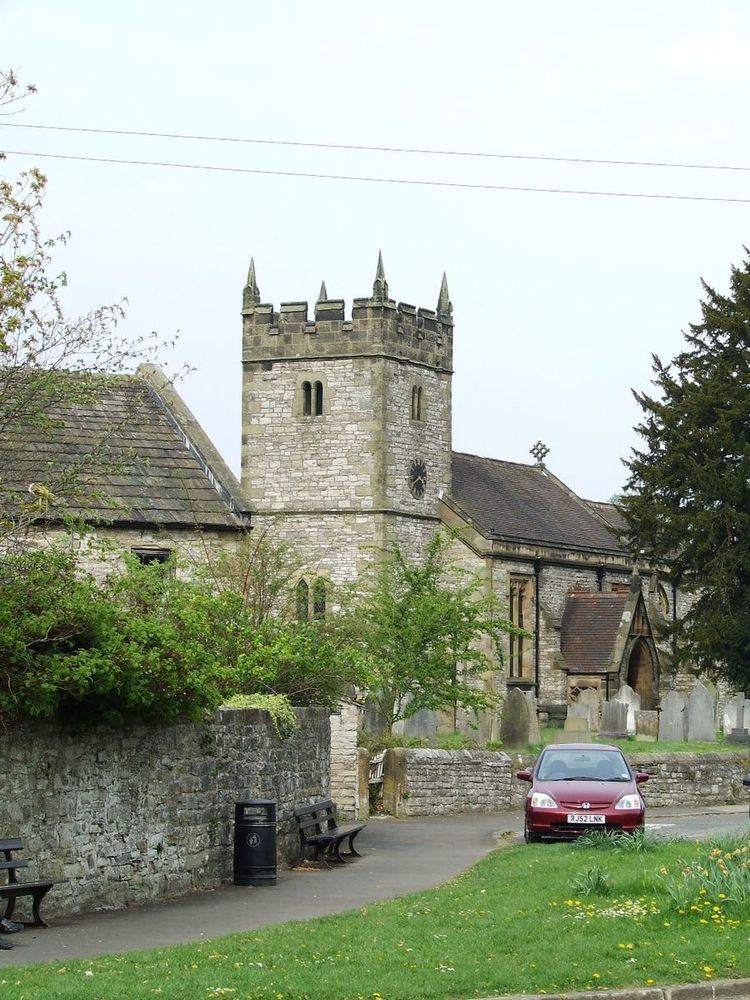Population 559 (2011) Sovereign state United Kingdom Local time Sunday 1:57 PM | OS grid reference SK194697 Post town BAKEWELL | |
 | ||
Weather 9°C, Wind SW at 34 km/h, 83% Humidity Points of interest Monsal Trail, Fin Cop, Magpie Mine | ||
Peak district walk monsal dale ashford in the water
Ashford-in-the-Water is a village in the Derbyshire Peak District, England, and on the River Wye. It is known for the quarrying of Ashford Black Marble (a form of limestone), and for the maidens' garlands made to mark the deaths of virgins in the village until 1801. Some of these are preserved in the parish church. The civil parish population (including Sheldon) taken at the 2011 Census was 559.
Contents
- Peak district walk monsal dale ashford in the water
- Map of Ashford in the Water UK
- History
- Culture
- Transport
- Notable buildings
- References
Map of Ashford in the Water, UK
History
The name Ashford derives from the Old English æsc and ford, and means a ford where ash-trees grow. In 926 the village was known as Æscforda and in the Domesday Book of 1086 it was Aisseford. The addition of "in-the-Water" occurred in the late 17th century, and reflected the proximity of the village to meanders of the River Wye.
In the Domesday Book Ashford was described as one of the locations in the area where lead was refined.
The village passed to the Cavendish family in the 16th century (from the Nevilles) and finally sold off in the 1950s to pay death duties.
Culture
The tradition of well-dressing continues in Ashford as in many other villages in the Peak District. Each year slabs of clay are decorated by village volunteers using petals, leaves and other plants to create a picture. The finished designs are then displayed at the six wells around the village and the event is marked by a church service and precession through the village to bless the wells. The event takes place around Trinity Sunday.
Transport
The village is bypassed by the A6 road.
Notable buildings
Within Ashford's civil parish are 62 structures that are listed by Historic England for their historic or architectural interest. None is listed as Grade I but there are two structures (Ashford Hall and the Sheepwash Bridge) that are Grade II*. All the others, including Thornbridge Hall and the parish church, are Grade II.
Ashford Hall dates from 1785, though alterations were made in about 1840. It is a five-bay, three-storey building of gritstone and ashlar, with a balustered parapet around its slate roof. It has an early-19th-century conservatory.
The Sheepwash Bridge is a packhorse bridge with an attached stone sheepwash: lambs were placed in the pen on one side of the river and the ewes swam across the river to get to them, while being pushed underwater by the shepherds to clean the fleece before shearing. Large trout inhabit the waters of the Wye around the bridge. It is a Scheduled Monument as well as a listed building.
Ashford's parish church was mostly rebuilt in 1868–70 but has a partly 13th-century tower, a 14th-century north arcade and a recovered Norman tympanum above the south doorway. In the churchyard lies the base and stump of a Grade-II-listed churchyard cross, variously dated to the 14th or 15th century.
Thornbridge Hall dates from the 18th century but was enlarged in 1871 and radically altered in a neo-Tudor style in 1897.
